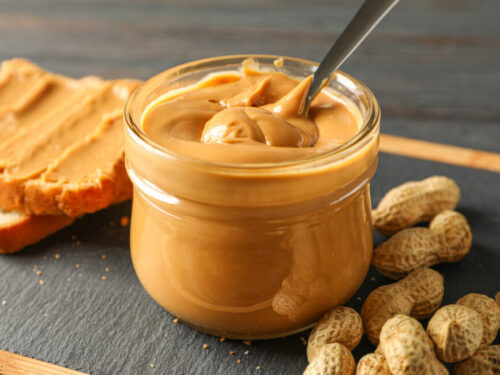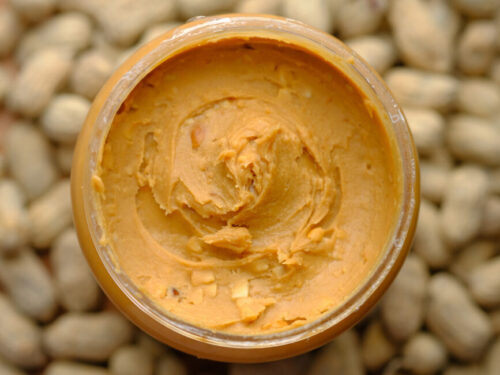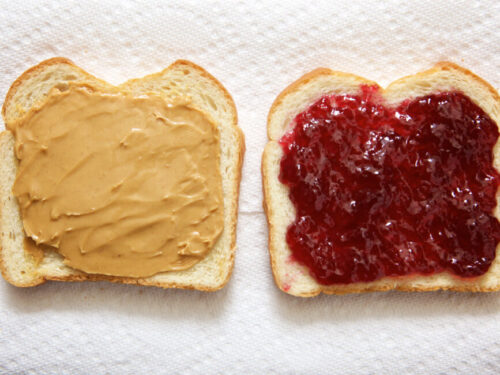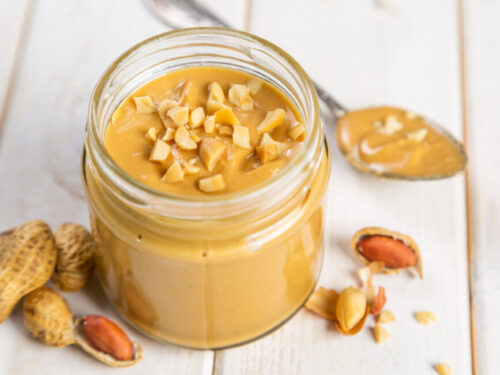So, you’re standing there in your kitchen, a jar of peanut butter in hand – a familiar scene for many of us, right? You’re about to close the fridge door (or is it the pantry door this time?) and a question pops up: Where does this nutty goodness truly belong? It’s a debate as old as time (well, almost) in the world of kitchen conundrums: To refrigerate or not to refrigerate your peanut butter?
Let’s be real, the peanut butter storage debate can get a bit sticky. Some swear by the fridge, while others are staunch pantry supporters. And if you’ve ever switched between natural and commercial brands, you know the plot only thickens.
In today’s post, we’re diving deep into the jar of this long-standing debate. We’re here to spread (pun intended) some clarity and provide you with useful guidelines on how to store your peanut butter. Whether you’re a smooth operator or a chunky fan, a natural aficionado or a commercial brand loyalist, this post is for you. Let’s get to the bottom of this, one scoop at a time!


To Refrigerate or Not to Refrigerate: Understanding Peanut Butter Storage
When it comes to storing peanut butter, the decision to refrigerate or not often depends on the type of peanut butter you have in your pantry. Let’s spread out the facts and find the best way to keep your peanut butter fresh and delicious.
Refrigerating Natural Peanut Butter
- Oil Separation in Natural Varieties: Natural peanut butter, known for its simple ingredients, often experiences oil separation. This is completely natural but can be a bit inconvenient.
- The Cold Solution: Refrigeration can help keep the oil mixed in with the peanut solids, reducing the need for frequent stirring and maintaining a more consistent texture.
- Shelf Life Benefits: Refrigeration can also extend the shelf life of natural peanut butter. While it’s fine at room temperature, chilling it can keep it fresher for longer, especially after opening.
Commercial Peanut Butter: Pantry-Friendly
- Stabilizers to the Rescue: Most commercial peanut butters contain stabilizers that prevent oil separation, making them more pantry-friendly.
- Room Temperature Storage: These varieties can comfortably sit in your pantry without significant changes in texture or taste.
Shelf Life Considerations
- Unopened Jars: According to The National Peanut Board, an unopened jar of peanut butter can last six to nine months at room temperature.
- After Opening: Once opened, a jar of peanut butter can last two to three months in the pantry. After this period, moving it to the fridge can help maintain its quality for another three to four months.
- Natural vs. Commercial: While natural peanut butter benefits more from refrigeration, especially after opening, commercial peanut butter with stabilizers has a longer pantry shelf life.
The Best of Both Worlds
- Texture vs. Longevity: If you prefer your peanut butter more spreadable, room temperature is ideal. But if you’re not using it regularly and want it to last longer, the fridge is your friend.
- Checking for Freshness: Regardless of where you store it, always check for signs of spoilage, like an off smell or mold, before using.
In summary, the decision to refrigerate peanut butter hinges on the type you use and how quickly you go through a jar. Natural peanut butter lovers might lean towards refrigeration, while those with commercial brands can usually stick to pantry storage. Either way, proper storage ensures that every scoop of peanut butter is as good as the first.

Other Peanut Butter Questions Answered
Peanut butter, while delicious and versatile, does raise a few questions, especially when it comes to storage and freshness. Let’s tackle some common queries to ensure your peanut butter experience is always top-notch.
How Can You Tell When Peanut Butter Has Gone Bad?
- Sniff Test: Start with the smell. Fresh peanut butter has a nutty, slightly sweet aroma. If it smells sour or rancid, it’s time to toss it.
- Visual Clues: Look for any signs of mold or dark spots, which are clear indicators of spoilage.
- Taste: Spoiled peanut butter will have an off taste.
How Does Refrigeration Affect Texture and Spreadability?
- Thicker When Cold: Refrigerating peanut butter, especially natural varieties, can make it thicker and less spreadable. This might be an inconvenience when you’re trying to spread it on soft bread.
- Room Temperature Solution: If you prefer a creamier texture, letting refrigerated peanut butter sit at room temperature for a bit before using can help soften it up.
How Long Can a PB&J Sandwich Sit Out?
- Safe Eating Guidelines: Generally, a peanut butter and jelly sandwich can sit out at room temperature for up to two hours. Beyond that, the risk of bacterial growth increases, especially if it’s in a warm environment.
- Packing for Later: If you’re packing a PB&J for lunch, using an insulated lunch box with a cold pack can keep it fresh until mealtime.
Storing Opened vs. Unopened Jars
- Unopened Jars: As mentioned earlier, unopened jars of peanut butter can last six to nine months in the pantry.
- Opened Jars: Once opened, natural peanut butter should be refrigerated for longevity, while commercial brands can stay in the pantry for two to three months before needing refrigeration.
Can You Freeze Peanut Butter?
- Freezing is an Option: Yes, you can freeze peanut butter for roughly 6 months before it begins to affect its flavor. Freezing doesn’t significantly alter its texture once thawed.
- Defrosting Tips: Thaw frozen peanut butter in the refrigerator or at room temperature. Stir it well before use, as freezing can cause some separation.
By keeping these pointers in mind, you can ensure your peanut butter is always fresh, delicious, and ready for your next snack or meal.

Navigating the Nutty World of Peanut Butter
To sum it up: natural peanut butter often benefits from a stint in the fridge, especially after opening, to keep it fresh and maintain its texture. On the other hand, commercial peanut butters, thanks to their stabilizers, are more lenient and can hang out in your pantry without a fuss. Remember, sniff, look, and taste tests are your best friends in determining if your peanut butter is still good to go. And when it comes to a PB&J, don’t let it lounge around for more than a couple of hours.
But hey, the peanut butter conversation doesn’t end here! Are you team smooth or team chunky? Does the thought of cold, thick peanut butter send shivers down your spine, or is it just the perfect spread for you? Jump into the comments and let’s get this crunchy vs. creamy debate rolling! Also, if you’ve got any peanut butter recipes that you swear by – from cookies to sauces – feel free to share. We’re always on the lookout for new ways to enjoy this nutty delight.
Recipes For Fellow Peanut Butter Aficionados
- Peanut Butter Pie
- Chicken Satay with Peanut Noodles
- Peanut Sauce Recipe
- Peanut Beef Satay Zoodle Bowl with Peanut Sauce Recipe






I am definitely a refrigerated peanut butter fan. I preferred the flavour when chilled. I found a way to maintain the consistency of the chilled peanut butter, but the spreadability of pantry storage.
Place a new jar of peanut butter in the fridge for a week or so. Remove it for 2 to 3 hours ( no more) and put it back into it chill. From that point on, it’s easy to spread.